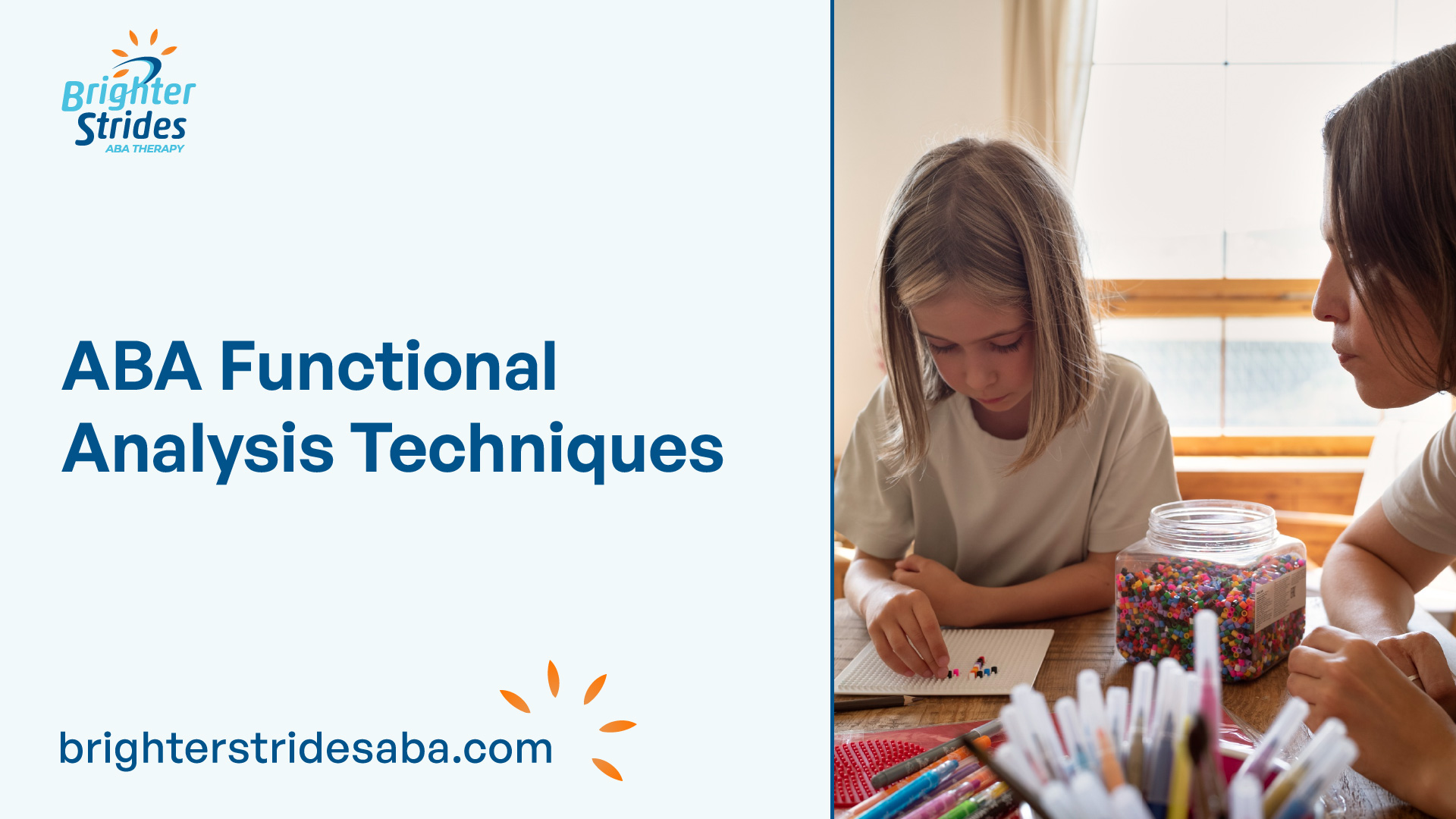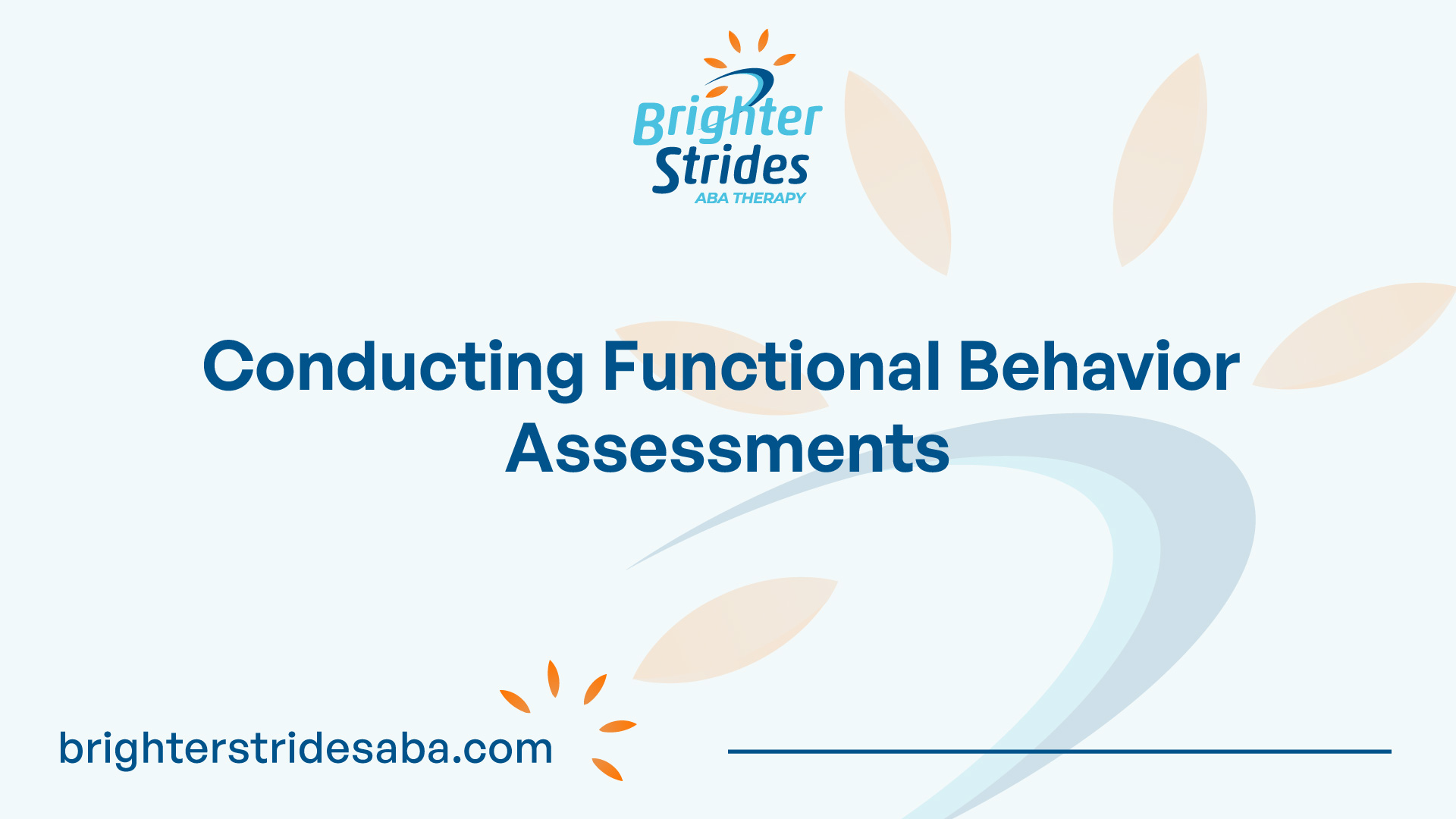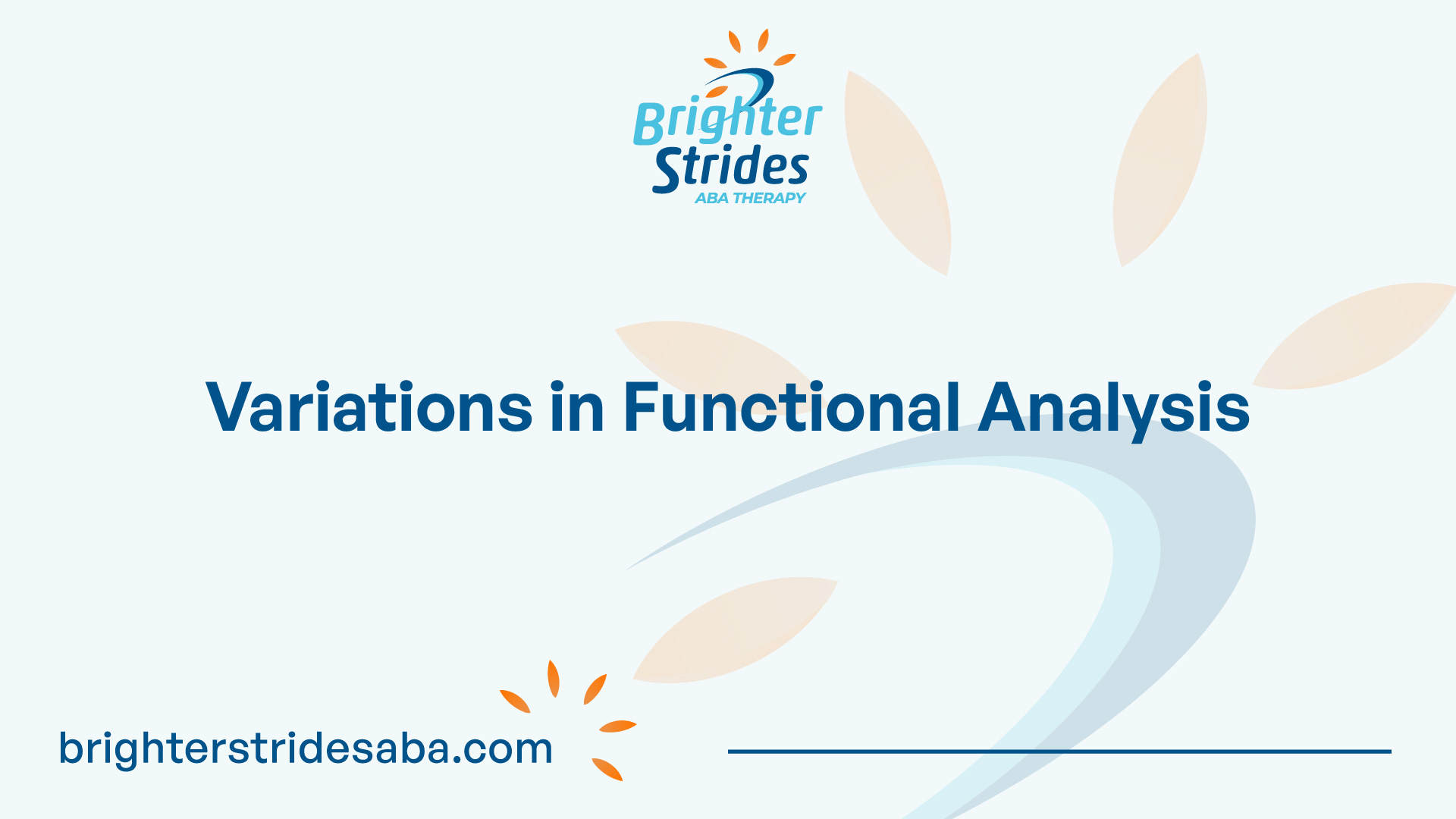
Understanding Functional Analysis
Functional analysis is a fundamental component of Applied Behavior Analysis (ABA) that involves the systematic assessment of behavior to identify its function and underlying causes. By understanding the purpose and conditions of functional analysis, behavior analysts can gain valuable insights into the behavior of individuals and develop effective treatment plans.
Purpose of Functional Analysis
The purpose of a functional analysis is to determine the function or purpose of a specific behavior. This process involves gathering and analyzing data to identify the environmental factors that influence the behavior. By identifying the function of the behavior, behavior analysts can develop targeted interventions to address the underlying causes and promote positive behavior change.
For example, in a hypothetical case study with an 8-year-old boy with autism engaging in head-banging behavior, a functional analysis may be conducted to determine whether the behavior serves as a means of escape, attention-seeking, or accessing preferred items or activities. Understanding the function of the behavior allows for the development of appropriate interventions tailored to the individual’s needs.
Conditions in Functional Analysis
During a functional analysis, specific conditions are systematically manipulated to examine their effect on the behavior. In a traditional functional analysis, there are four conditions:
- Play (Control Condition): This condition serves as a baseline and provides a comparison for the other conditions. The individual is allowed to engage in activities of their choice without any specific demands or consequences.
- Alone Condition: In this condition, the individual is left alone without any social interaction or attention from others. This condition helps determine if the behavior occurs in the absence of social stimulation.
- Contingent Escape Condition or Demand: In this condition, demands or tasks are presented to the individual. The behavior is observed to determine if it functions as an escape from the demands or as a way to avoid specific tasks or situations.
- Contingent Attention Condition: This condition involves providing attention or social interaction to the individual. The behavior is monitored to determine if it is maintained or reinforced by attention-seeking.
By systematically manipulating these conditions, behavior analysts can identify patterns and determine the function of the behavior. This information is crucial for creating effective behavior intervention plans and selecting appropriate ABA therapy techniques and reinforcement methods.
Understanding the purpose and conditions of functional analysis provides behavior analysts with a comprehensive assessment tool to better understand the function of behavior. This knowledge is essential for developing effective interventions and promoting positive behavior change. The process of functional analysis is a vital component of ABA therapy and has proven to be successful in treating problem behaviors.

Conducting Functional Behavior Assessments
When it comes to understanding and addressing challenging behaviors, conducting a Functional Behavior Assessment (FBA) is a vital step in the process. An FBA is a systematic approach that involves gathering and analyzing data to determine the function or purpose of a specific behavior. By conducting an FBA, valuable insights can be gained into the underlying causes of challenging behaviors, leading to effective intervention strategies.
Types of Assessments
When conducting a Functional Behavior Assessment, there are different types of assessments that can be used to gather relevant data. These assessments can be categorized into two main types: descriptive assessments and functional assessments.
Descriptive assessments focus on describing the behavior and gathering information about when and where the behavior occurs. This type of assessment provides important contextual information but does not delve into the underlying function of the behavior.
On the other hand, functional assessments strive to understand the purpose of the behavior by moving beyond surface-level observations. Functional assessments aim to identify the function of the behavior, such as escape/avoidance, attention-seeking, access to tangible items, or sensory stimulation. By determining the function of the behavior, appropriate intervention strategies can be developed to address the underlying causes effectively.
Process of FBA
The process of conducting a Functional Behavior Assessment involves several key steps to gather and analyze data effectively. These steps include:
- Collecting Data: This involves gathering information about the behavior, such as its frequency, duration, and intensity. Data can be collected through direct observation, interviews, and review of records.
- Gathering Baseline Data: Baseline data refers to collecting data on the behavior in its natural environment before any intervention or modification is implemented. This provides a baseline against which changes can be measured.
- Developing a Hypothesis: Based on the data collected, a hypothesis is formulated regarding the possible functions of the behavior. This hypothesis serves as a starting point for further testing.
- Testing the Hypothesis: This step involves conducting controlled experiments or observations to test the validity of the hypothesis. Various conditions are manipulated to determine the factors that influence the occurrence of the behavior.
- Collecting Additional Data: If needed, additional data may be collected to further refine the hypothesis and gather more comprehensive information about the behavior.
- Analyzing Data: The data collected during the FBA process is analyzed to identify patterns, correlations, and potential functions of the behavior. This analysis forms the basis for developing intervention strategies.
- Developing a Plan: Based on the analysis of the data, a comprehensive plan is developed to address the challenging behavior effectively. This plan may include behavior reduction techniques, ABA therapy techniques, ABA reinforcement methods, and ABA skill acquisition strategies tailored to the individual’s needs.
By following these steps, professionals can conduct a thorough and evidence-based Functional Behavior Assessment, enabling them to gain a deeper understanding of the challenging behavior and develop effective intervention plans. Conducting an FBA is an essential component of Applied Behavior Analysis (ABA) therapy, providing valuable insights into the function and underlying causes of behaviors.
Significance of Functional Analysis
Functional analysis (FA) holds great significance in the field of Applied Behavior Analysis (ABA) by providing valuable insights into the function and underlying causes of challenging behaviors. It helps professionals understand the factors that maintain problem behavior and guides the development of effective intervention strategies. In this section, we will explore two important aspects of functional analysis: identifying reinforcement sources and the applications of FA.
Identifying Reinforcement Sources
One of the primary goals of functional analysis is to identify the reinforcement sources that maintain problem behavior. By systematically manipulating different conditions, such as attention, alone, free play, and escape, professionals can observe and analyze the behavior patterns in order to determine its function. This process is essential for understanding why a behavior occurs and what maintains it in order to develop effective behavior intervention plans.
For example, in a hypothetical case study involving an 8-year-old boy with autism engaging in head-banging behavior, a functional analysis might reveal that the behavior is maintained by escape from demands or attention from caregivers. This insight allows professionals to tailor interventions that address the specific reinforcement sources, helping to reduce the occurrence of the problem behavior.
Applications of FA
Functional analysis has various applications within the field of ABA. Some of these applications include:
- Behavior Intervention Plans: Functional analysis provides the foundation for developing individualized behavior intervention plans. By understanding the function of the behavior, professionals can design interventions that directly address the underlying causes and provide appropriate alternative behaviors or strategies to replace the problematic behavior.
- Skill Acquisition: Functional analysis can also inform the design of skill acquisition programs. By identifying the reinforcing factors for desired behaviors, professionals can develop strategies to teach and reinforce new skills effectively. This ensures that individuals receive appropriate and meaningful reinforcement for their efforts, enhancing skill acquisition.
- Reinforcement Strategies: Functional analysis helps identify the most effective reinforcement strategies for individuals. By understanding the specific reinforcers that maintain behavior, professionals can tailor reinforcement systems to motivate and reward desired behaviors, increasing the likelihood of behavior change and skill development.
- Data-Driven Decision Making: Functional analysis provides a data-driven approach to decision making in ABA. By systematically collecting and analyzing data on behavior and its function, professionals can make informed decisions about intervention strategies, monitor progress, and make necessary adjustments based on the individual’s unique needs and responses [7].
In conclusion, functional analysis plays a critical role in ABA by identifying reinforcement sources and guiding intervention strategies. By understanding the function of behavior, professionals can develop effective behavior intervention plans, promote skill acquisition, implement appropriate reinforcement strategies, and make data-driven decisions to support individuals in achieving their goals.

Variations in Functional Analysis
Functional analysis (FA) is a crucial tool in applied behavior analysis (ABA) that helps identify the function of problem behavior. Several variations of functional analysis have been developed to address different constraints and objectives within the field. In this section, we will explore three common variations: brief functional analysis (BFA), trial-based FA, and latency FA.
Brief Functional Analysis
A brief functional analysis (BFA) is a condensed version of the traditional functional analysis. It provides shorter conditions to determine the possible maintaining variables of behavior. In BFA, each condition is typically presented for a shorter duration compared to a full functional analysis. The conditions with the highest rates of problem behavior are then compared to a reversal condition. In the reversal condition, an appropriate response is reinforced, while challenging behavior is ignored. This rapid reversal can help identify whether there is a functional relationship between the challenging behavior and the reinforcer. BFA is particularly useful when there are time constraints or limited control over environmental conditions [8].
Trial-Based FA
Trial-based functional analysis involves using short, discrete trials interspersed throughout the client’s typical schedule. During each trial, the client is exposed to the evocative condition for a brief period, usually one minute. If the client engages in problem behavior, the implementer provides the reinforcer for one minute. The frequency of the behavior during the first trial and the absence of behavior in the second trial are compared to determine the function. Trial-based FA allows for the assessment of multiple functions in a time-efficient manner. It is particularly useful when conducting a comprehensive functional analysis may not be feasible due to time constraints or other limitations.
Latency FA
Latency functional analysis focuses on analyzing response latency, which refers to the time until behavior occurs. In latency FA, evocative conditions are terminated following the occurrence of problem behavior, and the reinforcer is delivered. The time until the first challenging behavior occurs is compared between different conditions to determine the most likely function of the behavior. This variation of functional analysis allows for the assessment of how quickly problem behavior emerges in different contexts. It can be particularly useful when determining whether certain conditions may lead to faster or slower onset of problem behavior.
By utilizing these variations of functional analysis, behavior analysts can gather important information about the maintaining variables of problem behavior in a more efficient and targeted manner. It is important to select the appropriate variation based on the specific context and objectives of the assessment. Functional analysis, in its various forms, serves as a foundation for designing effective behavior intervention plans and guiding treatment decisions in ABA therapy.
ABA Therapy Methods
Applied Behavior Analysis (ABA) therapy utilizes various techniques to promote positive behavior change and skill acquisition in individuals with developmental disorders. Here are four commonly used ABA therapy methods:
Discrete Trial Training (DTT)
Discrete Trial Training (DTT) is a teaching strategy within ABA therapy that breaks larger concepts into smaller, simpler steps. It involves structured, one-on-one sessions where the therapist presents a specific instruction or question, prompts the individual’s response, and provides reinforcement for correct responses [9].
DTT is particularly effective for children with special needs as it helps them learn new skills in a systematic and repetitive manner. By breaking down complex tasks into smaller components, individuals are able to grasp and master each step before moving on to the next. DTT is often used to teach foundational skills such as language acquisition, self-care tasks, and academic skills.
Social Skills Training
Social Skills Training is a crucial component of ABA therapy, particularly for individuals on the autism spectrum. This method aims to improve social interaction and communication skills, helping individuals respond more naturally in social situations.
Social Skills Training addresses various aspects of social interaction, including reading social cues, understanding body language, greetings, turn-taking, and more complex skills such as detecting sarcasm and maintaining conversations. Therapists use structured activities, role-playing, and real-life scenarios to teach and practice these skills [9].
Natural Environment Teaching (NET)
Natural Environment Teaching (NET) is an ABA therapy method that utilizes everyday items and routines to teach skills in familiar environments. This approach promotes generalization, helping individuals transfer and apply learned skills across different settings.
By incorporating learning opportunities into natural environments such as home, school, or community settings, NET enhances the individual’s ability to use acquired skills in real-life situations. The therapist takes advantage of the individual’s interests and motivations to create learning opportunities, making the sessions more engaging and meaningful [9].
Pivotal Response Treatment (PRT)
Pivotal Response Treatment (PRT) is a variation of ABA therapy that uses play-based activities to teach new skills. It targets pivotal areas of a child’s development, such as motivation, self-management, and responsivity to multiple cues.
PRT focuses on identifying and modifying pivotal behaviors that have a significant impact on a child’s overall development. The therapy session involves following the child’s lead and using natural motivations to encourage communication, social skills, and positive behavior changes. By targeting these pivotal areas, PRT aims to promote generalized improvements in various domains of development [9].
These ABA therapy methods, including DTT, Social Skills Training, NET, and PRT, are tailored to meet the unique needs of individuals with developmental disorders. By employing these techniques, ABA therapists can help individuals acquire new skills, improve social interactions, and ultimately enhance their overall quality of life.

 We've just released an article!
Check out our blog!
We've just released an article!
Check out our blog!



